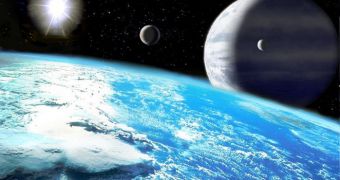Generally, ecosystems take millions of years to evolve. The interactions that govern a habitat, such as for example the food web that develops within, take time to adjust themselves. But the process can apparently be sped up, as a 200-year-old experiment shows.
The test was set up by a young Charles Darwin, who was nearing the end of his cruise to discover the marvels of the world. He saw Ascension Island, a barren, volcanic rock thousands of miles away from land in all directions, as the perfect spot to set up his evolution experiment,
With the help of the Kew Gardens and the Royal Navy, he populated the small island with numerous species of vegetation, that usually cannot be found living together in nature in the same ecosystems.
Now, some two centuries later, the island's peaksare covered by what is known as a cloud forest. This means that the trees in this forest take their humidity from clouds that pass over Ascension Island's peaks. And the trick appears to be working flawlessly.
Despite being tremendously arid, the island still provides the trees with enough moisture to allow for the development of a full-blown forest. The take-home message in all of this is that a fully functional ecosystem can be built either by chance accidents, or through a trial-and-error-type approach.
If we draw a parallel between what Darwin did and the terms we use today, we could say that the island underwent a process of terraformation. This resulted in the creation of a self-sustaining, self-reproducing ecosystem that can now take care of itself, without further human intervention.
Now imagine this type of approach translated to prospective colonies on the Moon or Mars. Rather than future astronauts trying to impose radical changes on those environments, wouldn't it be best to simply guide them in whatever direction we need?
By doing so, we could get the necessities we crave for, while at the same time creating a habitat that does not require constant intervention, or tweaking. The idea in itself is monumental, as it would eliminate the most difficult challenges associated with terraformation today.
On the other hand, it would enable humans to occupy other celestial bodies in the solar system, opening up the way for advanced space exploration of the type that was only fantasy half a century ago, Daily Galaxy reports.
Already, space agencies such as NASA are working on creating inflatable greenhouses and crops that would literally grow anywhere. These are all destined to serve human space exploration, and apparently the future is closer to us than we think.

 14 DAY TRIAL //
14 DAY TRIAL //